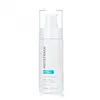What's inside
What's inside
 Key Ingredients
Key Ingredients

 Benefits
Benefits

 Concerns
Concerns

 Ingredients Side-by-side
Ingredients Side-by-side

Water
Skin ConditioningTriethyl Citrate
MaskingGlycerin
HumectantPolysorbate 20
EmulsifyingTocopheryl Acetate
AntioxidantSuperoxide Dismutase
AntioxidantEthyl Macadamiate
Skin ConditioningCetearyl Alcohol
EmollientBisabolol
MaskingHelianthus Annuus Seed Oil
EmollientC10-18 Triglycerides
EmollientPPG-3 Benzyl Ether Myristate
EmollientDimethyl Isosorbide
SolventPichia/Resveratrol Ferment Extract
Skin ConditioningNiacinamide
SmoothingSodium Hyaluronate
HumectantHyaluronic Acid
HumectantSodium Hyaluronate Crosspolymer-3
HumectantPanthenol
Skin ConditioningGlycyrrhiza Glabra Root Extract
BleachingFragaria Vesca Fruit Extract
AstringentCandelilla/Jojoba/Rice Bran Polyglyceryl-3 Esters
EmulsifyingMel
EmollientPhospholipids
Skin ConditioningCassia Angustifolia Seed Polysaccharide
Skin ConditioningAdenosine
Skin ConditioningSphingolipids
EmollientEpigallocatechin Gallate
AntioxidantAstaxanthin
Skin ConditioningPalmitoyl Tripeptide-38
Skin ConditioningGlyceryl Stearate
EmollientSclerotium Gum
Emulsion StabilisingEthylhexylglycerin
Skin ConditioningXanthan Gum
EmulsifyingPelargonium Graveolens Flower Oil
MaskingPelargonium Graveolens Oil
MaskingTocopherol
AntioxidantAscorbic Acid
AntioxidantCorn Starch Modified
AbsorbentHydroxypropyl Cyclodextrin
MaskingO-Cymen-5-Ol
AntimicrobialSodium Gluconate
Skin ConditioningSodium Stearoyl Lactylate
EmulsifyingSodium Polygamma-Glutamate
Emulsion StabilisingPolysorbate 60
EmulsifyingHydroxyethylcellulose
Emulsion StabilisingSorbic Acid
PreservativeMalic Acid
BufferingPhenoxyethanol
PreservativeCitral
PerfumingLimonene
PerfumingCitronellol
PerfumingGeraniol
PerfumingLinalool
PerfumingWater, Triethyl Citrate, Glycerin, Polysorbate 20, Tocopheryl Acetate, Superoxide Dismutase, Ethyl Macadamiate, Cetearyl Alcohol, Bisabolol, Helianthus Annuus Seed Oil, C10-18 Triglycerides, PPG-3 Benzyl Ether Myristate, Dimethyl Isosorbide, Pichia/Resveratrol Ferment Extract, Niacinamide, Sodium Hyaluronate, Hyaluronic Acid, Sodium Hyaluronate Crosspolymer-3, Panthenol, Glycyrrhiza Glabra Root Extract, Fragaria Vesca Fruit Extract, Candelilla/Jojoba/Rice Bran Polyglyceryl-3 Esters, Mel, Phospholipids, Cassia Angustifolia Seed Polysaccharide, Adenosine, Sphingolipids, Epigallocatechin Gallate, Astaxanthin, Palmitoyl Tripeptide-38, Glyceryl Stearate, Sclerotium Gum, Ethylhexylglycerin, Xanthan Gum, Pelargonium Graveolens Flower Oil, Pelargonium Graveolens Oil, Tocopherol, Ascorbic Acid, Corn Starch Modified, Hydroxypropyl Cyclodextrin, O-Cymen-5-Ol, Sodium Gluconate, Sodium Stearoyl Lactylate, Sodium Polygamma-Glutamate, Polysorbate 60, Hydroxyethylcellulose, Sorbic Acid, Malic Acid, Phenoxyethanol, Citral, Limonene, Citronellol, Geraniol, Linalool
Ingredients Explained
These ingredients are found in both products.
Ingredients higher up in an ingredient list are typically present in a larger amount.
Glycerin is already naturally found in your skin. It helps moisturize and protect your skin.
A study from 2016 found glycerin to be more effective as a humectant than AHAs and hyaluronic acid.
As a humectant, it helps the skin stay hydrated by pulling moisture to your skin. The low molecular weight of glycerin allows it to pull moisture into the deeper layers of your skin.
Hydrated skin improves your skin barrier; Your skin barrier helps protect against irritants and bacteria.
Glycerin has also been found to have antimicrobial and antiviral properties. Due to these properties, glycerin is often used in wound and burn treatments.
In cosmetics, glycerin is usually derived from plants such as soybean or palm. However, it can also be sourced from animals, such as tallow or animal fat.
This ingredient is organic, colorless, odorless, and non-toxic.
Glycerin is the name for this ingredient in American English. British English uses Glycerol/Glycerine.
Learn more about GlycerinTocopheryl Acetate is AKA Vitamin E. It is an antioxidant and protects your skin from free radicals. Free radicals damage the skin by breaking down collagen.
One study found using Tocopheryl Acetate with Vitamin C decreased the number of sunburned cells.
Tocopheryl Acetate is commonly found in both skincare and dietary supplements.
Learn more about Tocopheryl AcetateWater. It's the most common cosmetic ingredient of all. You'll usually see it at the top of ingredient lists, meaning that it makes up the largest part of the product.
So why is it so popular? Water most often acts as a solvent - this means that it helps dissolve other ingredients into the formulation.
You'll also recognize water as that liquid we all need to stay alive. If you see this, drink a glass of water. Stay hydrated!
Learn more about Water